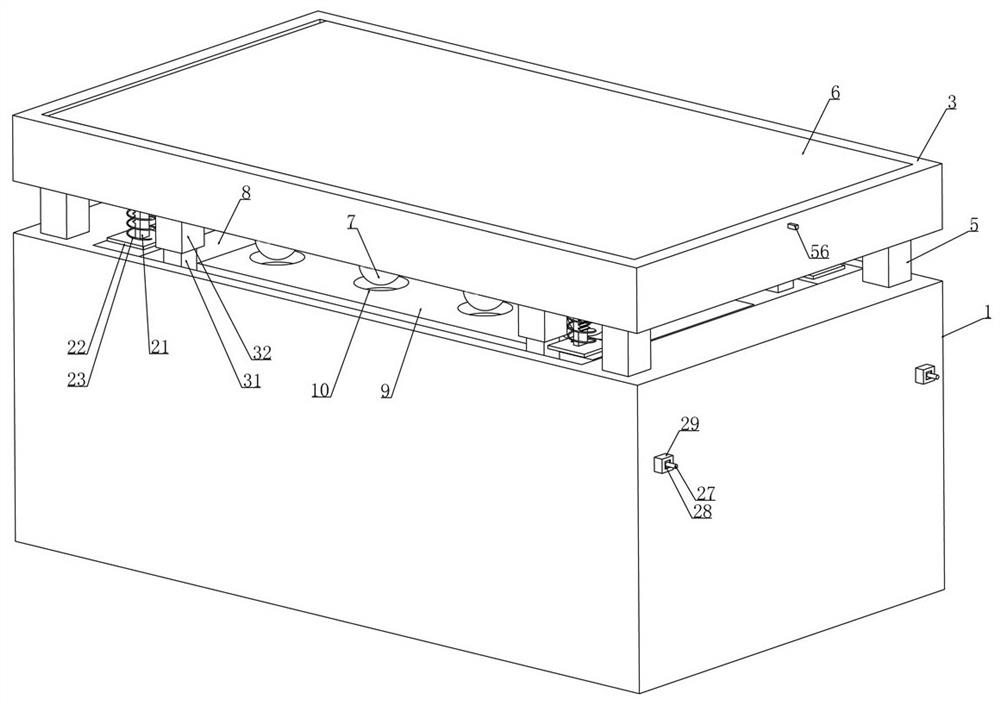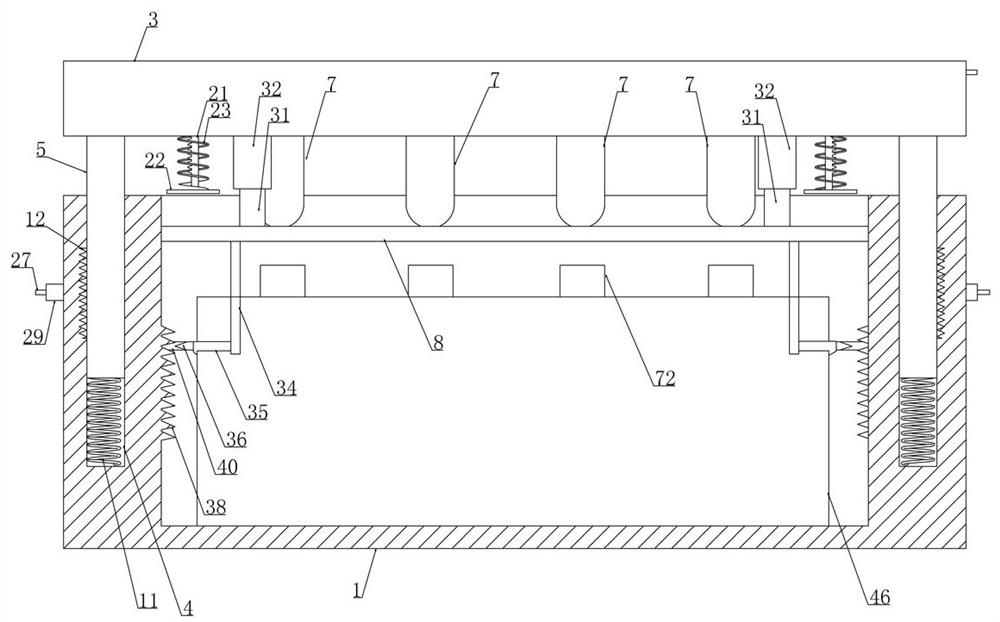A new type of kidney disease detection kit
A technology for detection kits and kits, which is applied in the direction of biological testing, material inspection products, etc., can solve the problems of affecting test results, disease deterioration, and easy contamination, so as to achieve accurate experimental test results and avoid pollution.
- Summary
- Abstract
- Description
- Claims
- Application Information
AI Technical Summary
Problems solved by technology
Method used
Image
Examples
Embodiment 1
[0042] Embodiment 1, a new type of kidney disease detection kit, including a kit 1 and a plurality of test tube slots 2 are arranged in the kit 1, and it is characterized in that, the upper end surface of the kit 1 is provided with intervals to match the kit 1 and The positioning frame 3 arranged horizontally, the four corners of the upper end surface of the reagent box 1 are provided with vertically extending slideways 4, the lower end surface of the positioning frame 3 is fixedly equipped with a slide bar 5 slidingly matched with the slideway 4, and the upper end surface of the positioning frame 3 The end face is rotatably equipped with a cover plate 6 and the lower end surface of the cover plate 6 is provided with a plurality of test tube stoppers 7 corresponding to the test tube slots 2. The inner wall of the reagent box 1 is vertically slid with a rectangular frame 8 and the upper end surface of the rectangular frame 8 is stretched. The device is vertically slidably connec...
Embodiment 2
[0047] Embodiment 2. On the basis of Embodiment 1, the second positioning device includes a plurality of first positioning teeth 12 arranged on the side wall of the slideway 4 and extending longitudinally. To the first rectangular hole 13 that is set and extends away from the test tube slot 2, a vertically extending wire hole 14 is provided in the slide bar 5, and the wire hole 14 faces the side of the plurality of first positioning teeth 12 in a horizontal direction. A first locking tooth 15 arranged horizontally and matched with the first positioning tooth 12 is slidably connected. Cooperate with the first interference rod 16, the first locking tooth 15 is placed in the wiring hole 14, and one end is connected to the second spring 17, and the other end of the second spring 17 is connected to the side wall of the wiring hole 14 near the test tube groove 2, The first locking tooth 15 is placed in the wiring hole 14, and one end is connected with a wire rope 18, and the wire ro...
Embodiment 3
[0049] Embodiment 3, on the basis of Embodiment 2, the trigger device includes a rack 21 vertically slidingly connected to the bottom of the positioning frame 3, and a baffle 22 is fixedly installed at the bottom of the rack 21, and the rack 21 is spaced from the center of the rack. There is a third spring 23 extending vertically. One end of the third spring 23 is fixedly connected to the upper end surface of the baffle plate 22 and the other end is fixedly connected to the bottom of the positioning frame 3. The gear 24 inside the frame 3 and the gear 24 is connected with the second wire pulley 25 coaxially, and the wire rope 18 is wound on the second wire pulley 25 around one end of the tension wire pulley 20 .
[0050] When this embodiment is in use, how the trigger device works after being triggered and how the second positioning device positions the positioning frame 3 will be described in detail in this embodiment; we set the elastic force of the third spring 23 to be gre...
PUM
 Login to View More
Login to View More Abstract
Description
Claims
Application Information
 Login to View More
Login to View More - R&D
- Intellectual Property
- Life Sciences
- Materials
- Tech Scout
- Unparalleled Data Quality
- Higher Quality Content
- 60% Fewer Hallucinations
Browse by: Latest US Patents, China's latest patents, Technical Efficacy Thesaurus, Application Domain, Technology Topic, Popular Technical Reports.
© 2025 PatSnap. All rights reserved.Legal|Privacy policy|Modern Slavery Act Transparency Statement|Sitemap|About US| Contact US: help@patsnap.com



